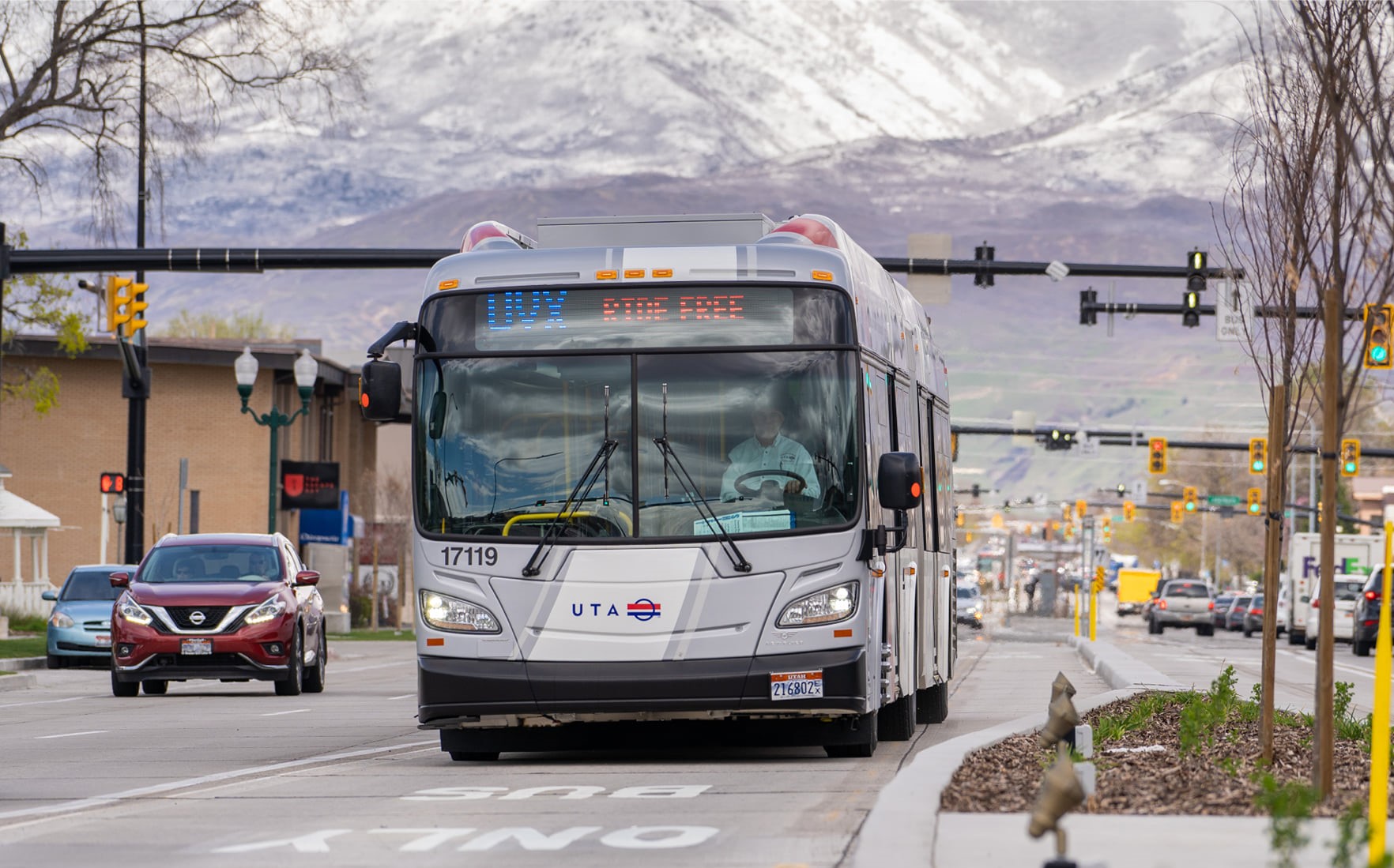Bus Rapid Transit

Overview
Bus Rapid Transit (BRT) is a high-quality bus-based transit system that delivers fast and efficient service that may include dedicated lanes, busways, traffic signal priority, off-board fare collection, elevated platforms and enhanced stations. BRT has advanced throughout the U.S. over the last two decades as congestion has increased and community leaders have sought affordable transit alternatives. BRT operates in big cities like New York, Los Angeles, Boston, Miami, Pittsburgh, Cleveland, and Las Vegas, and is growing in popularity among mid-sized metropolitan areas like Minneapolis, MN; Eugene, OR; Indianapolis, IN; Kansas City, MO; Hartford, CT; and Richmond, VA.
Because BRT contains features similar to light rail transit, it is often considered more reliable, convenient and faster than regular bus services. With the right features, BRT is able to avoid the delays that can slow regular bus services, like being stuck in traffic and queuing to pay on board.
On August 9, 2024, FTA published the National Bus Rapid Transit Institute (NBRTI) Program Report. The full report summarizes and describes the activities conducted under each of the NBRTI program areas: Clearinghouse, Technical Assistance/Support, and Research/Evaluation. Activities included a website, informational brochures and newsletters, a listserv, conference support, conference presentations, site visits, BRT system evaluations, research, journal publications and other articles, and technical assistance to FTA, transit agencies, and local governments. The report has documented the following highlights of the NBRTI program from its inception in January 2001 to June 2024: 80 presentations, 28 journal articles and publications, 11 evaluation reports, and 17 research reports.
History
In less than two decades, BRT has progressed from a little-known innovation to one of the fastest growing transit modes in the nation. The rise of BRT in the U.S. traces its roots back to several early initiatives of the Federal Transit Administration (FTA).
One of UMTA’s (FTA’s predecessor) first major projects was to support the city of Pittsburgh with $18 million in federal support to develop the nation’s first bus rapid transit line. The rapid transit system operated in a bus-only lane and connected riders with frequent service between downtown and the airport. Today, bus rapid transit is the nation’s fastest-growing transit mode. Since 2016, 317 miles of BRT lines have been put into service in the U.S.
Inspired by the impressive performance and cost-effectiveness of successful BRT systems in Latin America, FTA sponsored a BRT Demonstration Program in 1998, partnering with several competitively selected transit properties for the implementation, operation, and evaluation of BRT projects. In early 2001, FTA sponsored the National Bus Rapid Transit Institute (NBRTI), a renowned program of research, innovation, training, and technical assistance in the field of BRT.
These early BRT initiatives, along with FTA’s Small Starts and Very Small Starts federal funding programs, ushered in a BRT boom in the U.S. that began in the early 2000s and continued throughout the decade, including projects in Los Angeles; Boston; Oakland, California; Las Vegas; Kansas City, Missouri; Eugene, Oregon; and Cleveland. Several of these forerunners were particularly innovative and emerged as models of success for swift and inexpensive implementation, making BRT an attractive option for cities contending with increasing traffic congestion and constrained budgets for public transportation.
Today, BRT is operating or in development in cities large and small across the nation. Many of the systems in planning or under construction are smaller, corridor-based projects. As BRT evolves into a fully mature mode within the U.S., there is a continuing need for the development of guidance for the transit industry through targeted research activities.
Reports and Resources
- Boston Silver Line BRT System Evaluation
- Evaluation of Port Authority of Allegheny County’s West Busway Bus Rapid Transit Project
- Honolulu Bus Rapid Transit (BRT) Project Evaluation
- Las Vegas Metropolitan Area Express (MAX) BRT Demonstration Project Evaluation
- Lynx LYMMO Bus Rapid Transit (BRT) Evaluation
- San Pablo BRT Project Evaluation
- South Miami-Dade Busway System Summary Evaluation
- Characteristics of Bus Rapid Transit for Decision-Making
- University of Minnesota, Center for Transportation Studies, Transitway Impacts Research Program (TIRP)
- APTA BRT Standards
- TCRP Report 118: Bus Rapid Transit Practitioner’s Guide
- Characteristics of BRT for Decision-Making
- Land Use Impacts of Bus Rapid Transit: Phase II—Effects of BRT Station Proximity on Property Values along the Boston Silver Line Washington Street Corridor (FTA Report 0022)
- UC Berkeley, Institute of Transportation Studies, California Partners for Advanced Transportation Technology
- US Government Accountability Office (GAO), Bus Rapid Transit: Projects Improve Transit Service and Can Contribute to Economic Development
- National Institute for Transportation and Communities, Impacts of BRT on Surrounding Residential Property Values
- National Institute for Transportation and Communities, National Study of BRT Development Outcomes
- Economic Development Impacts of BRT, Center for Transportation Studies, University of Minnesota
